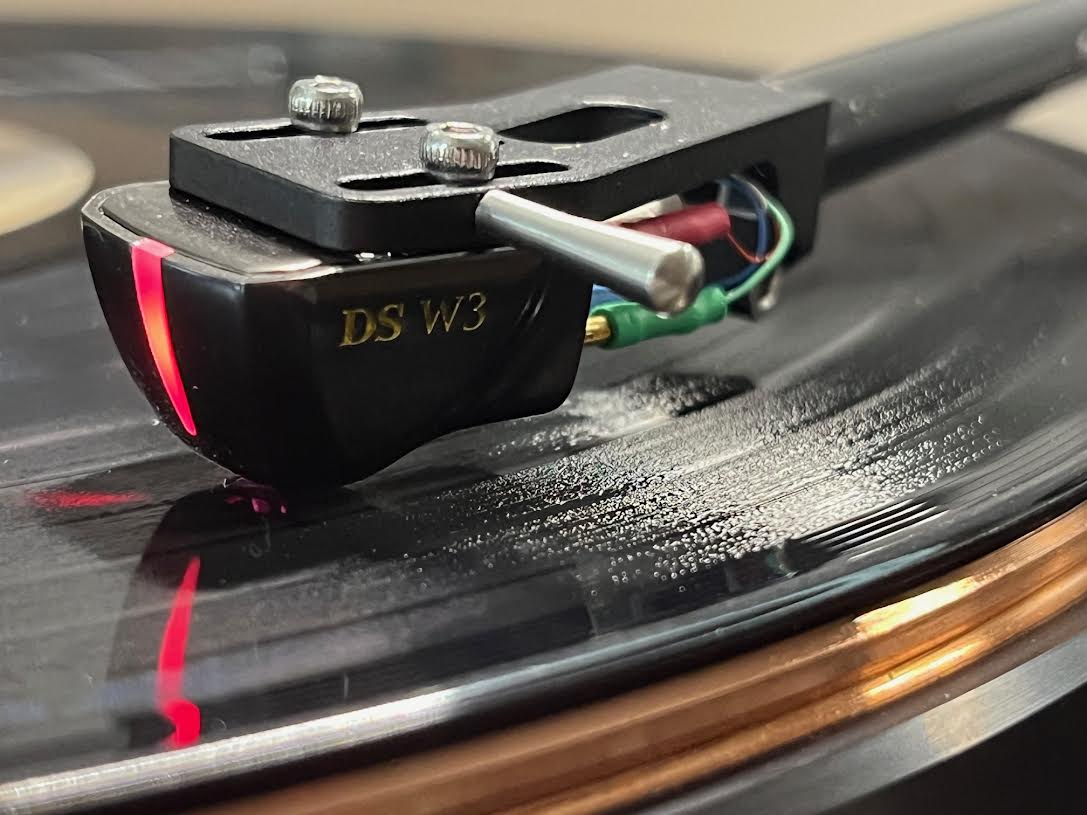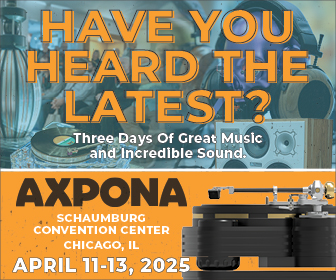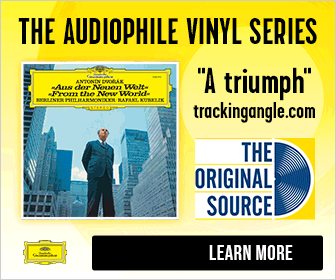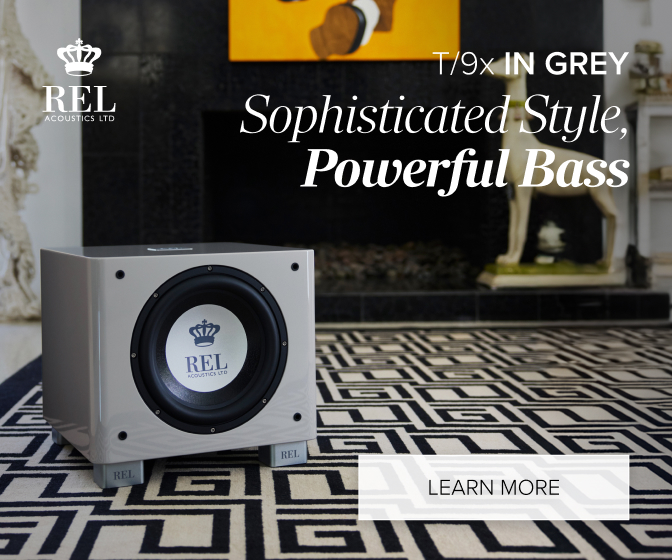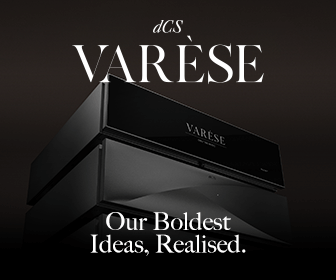DS Audio DS W3 Optical Phono Cartridge
Dave McNair explores the lastest offering from DS Audio
The Japanese firm DS Audio has been on a mission to revive and massively improve optical-based cartridges since CEO Tetsuaki Aoyagi introduced the DS Audio W1 in early 2014, updating Toshiba's optical cart concept from the 1970s. The DS W3 model I’m reviewing here is considered one of the company’s third-generation designs and incorporates many improvements taken from the top-of-the-line Grand Master Ex, Grand Master, and DS Master 3.
(Editor's note: I reviewed the same DS W3 cartridge in conjunction with the Meitner Audio DS-EQ2 Optical Phono Equalizer. Even though I've already reviewed the cartridge in context of the Meitner equalizer I decided that readers would enjoy a mastering engineer's perspective so I gave Dave a go ahead to also review it).
But wait, what is an optical cartridge, and how do these work? DS Audio carts still use a stylus and cantilever, but that’s where the similarity to MM or MC carts ends. Instead of using a motor consisting of coils and magnets and the accompanying superstructure to generate an electrical signal, DS Audio uses “shading plates” attached to the cantilever to translate groove movement into voltage by mechanically varying the light intensity of internal LEDs that shine onto very precise photoelectric sensors. The photoelectric sensors produces a voltage output proportional to the changing LED light intensity.
The stylus, cantilever, and shading plates are the only moving parts and can be made several magnitudes lower in mass than the motors in standard carts. Also, since the parts in an optical motor are non-magnetic, no eddy currents are induced that interfere with the delicate signal, as is the case with a coil/magnet-based motor design.
Furthermore, a coil/magnet-based driver generates a voltage based on acceleration or a change in the speed of the moving pieces as the groove is traced versus a change in distance in the movement-to-electrical conversion of an optical cart. As the needle follows the tiny geometry of the pattern cut into the groove walls and larger-scale groove undulations (typical of low frequencies), these movements can be sensed as either speed or size of change. Who knew? (In other words, coil/magnet cartridges, [like the cutter heads that produce lacquers] are velocity sensitive devices, while optical [and strain gauge] cartridges are amplitude sensitive devices_ed.)
One drawback of a velocity sensing system is that higher frequencies produce a higher output, and low frequencies produce a lower output. This output is in addition to the RIAA pre-emphasis curve encoded by the lathe electronics, which produces a considerable boost at the top and a large cut at the bottom. Taming all the high-frequency resonances and headroom issues associated with a velocity-sensing phono pickup is a tall task, especially for MC carts with an incredibly low output requiring extreme amplification, creating more engineering problems.
Ain’t no thang for a displacement-based generator used in an optical cart. The resultant output is less in the high frequencies and more in the lows—the direct opposite of a velocity-based system. Far less playback eq and gain are used in the DS Audio carts. And the W3 output spec is a whopping 70 mV, easily 100 times the typical MC output level.
However, this means a DS Audio cart must be used with a special optical phono preamp in the form of a box that supplies power to the LED in the cart and applies the unique and less severe eq for playback. The DS Audio phono pres are sometimes called energizers or decoder boxes (to fully appreciate the deviation from flat response these optical cartridges produce because they aren't velocity sensitive devices and therefore cannot deal precisely with the inverse RIAA curve 'built into' the record, see this measurement, which also shows the improvements DS has made in this generation's devices_ed.)
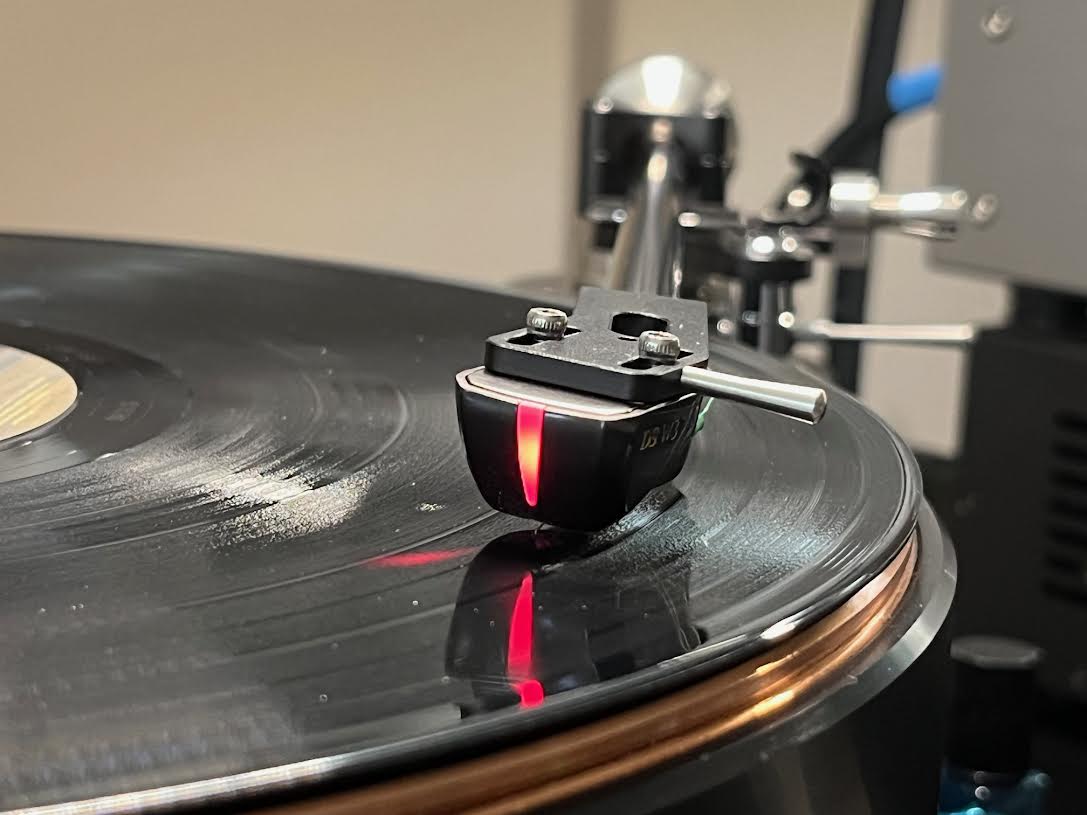
The improvements in the W3 might make more sense to you now. Summarized thusly:
A boron cantilever with a line contact diamond stylus replaces an aluminum cantilever used in the DS 001 and ES3.
Two independent LEDs and photoelectric sensor elements are now used in all models
Two 99.9% pure Beryllium shading plates with a 50% reduction in mass as opposed to the second-gen aluminum plates.
A more rigid, less resonant aluminum body and 16 times larger diameter copper wire are used to reduce impedance.
Improvements to the decoder box include thicker circuit boards and more capacitance in the power supply.
Four low-frequency roll-off filters instead of 2 are used. Low-frequency roll-off must be used because the DA Audio output goes down to DC.
Even if you know little about electronics or cartridge design, it’s easy to understand how the high output, along with the W3 shading plates' radically lower mass and increased stiffness, contribute to a quieter, more accurate portrayal of the groove information.
In Use
My prior experience with a DS Audio 003 was mixed. I enjoyed the overall sound and marveled at the tech, but the 003-level energizer box did not sufficiently compensate for the low-frequency output of the cart. Too much upper bass was left in after playback eq was applied by its box. That was a deal breaker for me in my system at the time. An EMM Labs DS-EQ1 decoder improved low-end linearity (and everything else) but seemed too expensive to make sense for a lower price point DS 003. The DS W3 is an entirely different league with a huge jump in sonic quality.
While the DS W3 and decoder box are next up in the line from a DS 003 package, the price difference is hefty - $15,000 and $6,000, respectively, which made me curious to hear the delta between the two. I’ll tell you right now that the DS W3 is more than twice an improvement based on what I heard. Its also the finest cartridge I’ve ever listened to.
In reviewing the excellent Westminster Audio - Monologue phono pre, I encountered a continuity issue with the internal wiring in my TW Acustic tonearm. My first listen to the W3 with sketchy wiring caused loud pops to assault me from my Acora Acoustics VRC loudspeakers. Some sleuthing revealed it was the lead that supplies power to the W3’s LED elements.
I’d guess that a DS cart pin configuration differs from the standard left/right, plus and minus, by being left +, right +, common ground, and power. I mention this because DS Audio states in the W3 manual that plugging in a standard cart to a DS decoder box may damage the cart, so it’s a good idea to keep the externally powered nature of DS carts in mind. They don’t put a light on the front of DS carts just for the bling factor.
After multiple setups on my two TW arms using WallyTools and a Fozgometer, I learned that the best readings and sonics were obtained with a healthy twist of the headshell for azimuth. After initially feeling a little weird about how the physical tilt looked, it sounded so good that that I lost any concern.
The specified VTF is between 1.85 and 2.05 grams, with 1.95 grams recommended. I felt an inner chuckle when I read in the DS W3 manual that DS Audio calls the stylus a needle (most of the time). Tracking force is called “needle pressure” - c’mon, you gotta love that. The DS W3 is on the light side at 7.9 grams, and that allowed my middle-size tonearm weight to go very close to the arm pivot point, which is always a good thing for reducing angular momentum.
During the review period, other carts were reviewed, so I needed to swap the W3 around a bit. I didn’t obsess every time and was aware of a large portion of the DS sonics even if short of a mission-critical alignment. However, the degree of resolution and musical rightness available with the W3 was very compelling when scrupulously dialed in. Every tiny tweak was audible. I also left the decoder box on 24/7 during the audition period. The manual recommendation is to leave the box powered up for the first few months to fully energize all those capacitors. The decoder/energizer box has unbalanced inputs and a choice of balanced or unbalanced outputs. I tried both and can’t say I heard a big difference, if at all.
Sounds
Yes, I was skeptical of a different approach to cartridge design, but it didn’t take much listening to convince me of the DS W3's benefits and sonic superiority.
As weeks passed, and I made numerous comparisons to my other carts, I could not deny the degree to which the W3 upped my enjoyment of vinyl. One thing I was not prepared for, and might be the most important attribute of the W3, was its ability to transcend minor issues that I’ve always heard on even the best MC carts. Any slight amount of bunchyness on a vocal simply disappeared. By that, I’m not talking about edginess or haze (although those disappeared as well); I’m talking about a hard-to-define, usually momentary buildup in the 2k to 3.5k region of a vocal that can be taken to be just the way that vocal sounds. Some carts and (other components) will seek to minimize this troublesome tonal region by dipping the frequency response. That was what I thought the W3 was doing, but after more listening, I concluded that the cart is very linear in this range. The DS W3’s smoothness must be related to a lack of distortion, rather than a dip in response in this frequency area. Coincidentally, the Acora VRCs do something very similar. Hence, the sense of flow and uninterrupted musicality was at an all-time high in my system while playing records using the DS W3. I need new words for the liquidity and sense of musical flow that is the W3 sound.
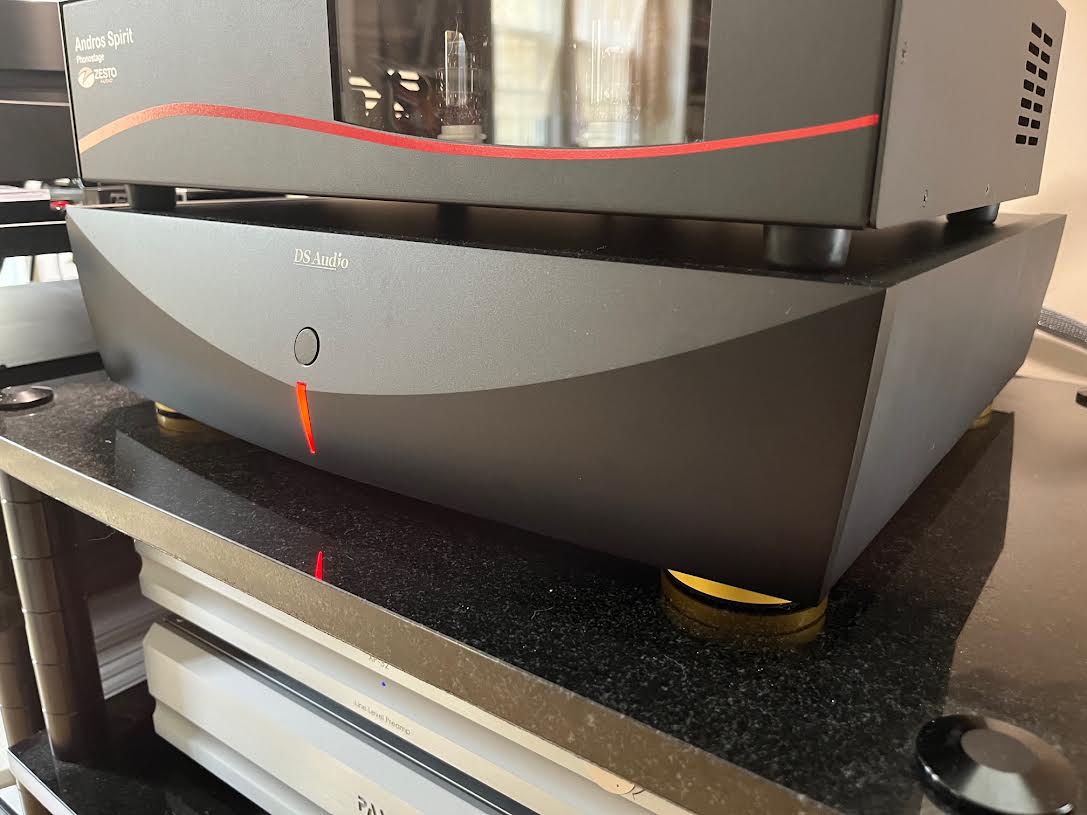
I assume that whatever has inherently changed in low-frequency response due to incorporating all the improvements in 3rd generation design details of the cart, contributed to a low end that’s mighty impressive. And now having a choice of four rather that two low frequency roll off choices didn’t hurt. On the least radical setting (30hz 6db per octave), the extreme lows are still a little big but well within what I consider acceptable. I came to love that little extra kick around 40hz or so. I did live with the 50hz 6db per octave setting and 30hz and 50hz with a 12db per octave slope. Ultimately, I preferred 30hz/6db as a function of my system and my love for bass.
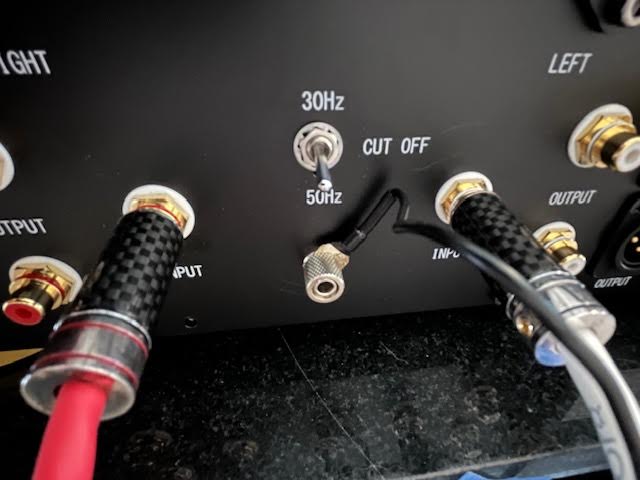
When listening to a mix that I’m mastering at the studio or a new component to review at home, the first thing my ear keys into is usually the high frequencies - or rather, how the highs relate to low-frequency energy in the recording. And the character is as important as the level. Character is the thing that differentiates and defines a bright and edgy vibe from a smooth, rich, pure, sparkling top end. I can’t subtract distortion during mastering (ok, sometimes I can), but I can add various flavors of harmonic content and dynamically or statically alter the shape and amount of energy in the octaves above 1khz, so my ear is sensitive to what’s going on up there.
I found the treble presentation of the DS W3 to be exactly what my ear wants to hear due in large part to the absence of distortion and linearity of response across the spectrum. It’s the Holy Grail of clarity - without even the smallest detectable amount of added texture. It’s my feeling that the additional coloration added to a recording as a byproduct of the lacquer cutting, electroplating, and pressing process, doesn’t benefit from having any more added! I can’t always say the same about digital and apparently other folks feel similar as evidenced by all the vacuum tube and transformer DAC designs.
When I compared my Dynavector XV-1t on one tonarm to the DS W3 on the other identical tonearm, I could hear how the Dyna sounded a bit pinched and bunched up. Same for my other carts like the Charisma YYZ. The DS W3 had an open, clear, unconstrained quality that I wasnt even aware of missing in the other MC carts. Nor does the W3 have any additional air on top. The sense of air being a pleasing but additive and acentuated texture not entirely present on the recording. Sometimes components will have what I would call a great tonality. But tone is the opposite of linearity, accuracy, neutrality or however you want to characterize as reproduction with the absolute least added to the signal.
I have discovered over the years, what my ear loves about the sound of vinyl is imbued during the process to make it, not the added colorations of playing it back. I’ll go so far as to say you haven’t really heard your records until you listen to a DS Audio cartridge play ‘em back.
Lack of noise and great tracking ability is also part of the W3 performance. I want to hear nothing but the faint hint of noise that is a result of the heated cutting stylus cutting though nitrocellulose with an occasional bit of tape hiss on some tape sourced mixes. The W3 reveals all of this in spades.
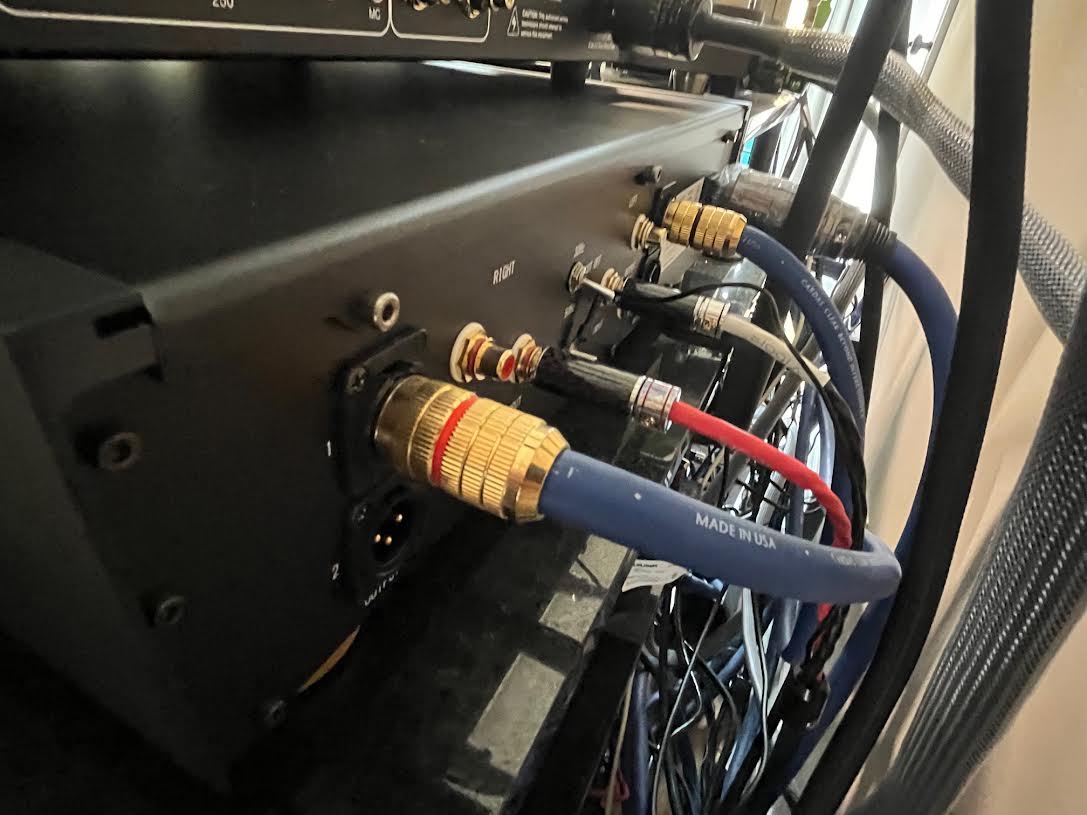
I’m not going to list specific audio examples this time. Suffice it to say, Blue Note era stuff had clarity to the top end with jump-out-at-me dynamic contrasts to horns (and everything else) which was superb. My favorite Radiohead and Peter Gabriel records, plus various other varieties of Prog and alternative selections, were simultaneously opened up and given a liquid flow to the music I hadn’t heard in quite the same way. Imaging was off the charts, but not in a parlor trick manner, just an engaging, enveloping way. Maximum musical engagement was the order of the day.
If I listen to the same record on four different MC carts that I consider to be solid performers, it’s akin to hearing four different experienced mastering engineers master the same track. All four sound different. All four can sound good. However, after experiencing the DS Audio DS W3, I realized that the W3 lives in a different territory - a space that allows more music on a record to emerge without imposing a character on the sound. I suppose a lack of character could be considered character, but you know what I mean.
Wrap It Up
I know that’s a lot of cabbage for a cartridge, but it’s not my job to be an apologist for the insane prices we find at the top of the HiFi food chain. And you can only use your new DS Audio box with a DS cartridge; another bummer. Also, I haven’t seen any intel on how long these carts will deliver their game-changing sound. Let’s hope you get lots of playback time for your 15 large.
Despite these realities and slight reservations, vinyl playback doesn't get any better, in my not-so-humble opinion. Tetsuaki San and company have my highest admiration for this exceptional product. If you live for vinyl and have the means, do yourself a big favor and check out a DS Audio W3. You’re welcome.
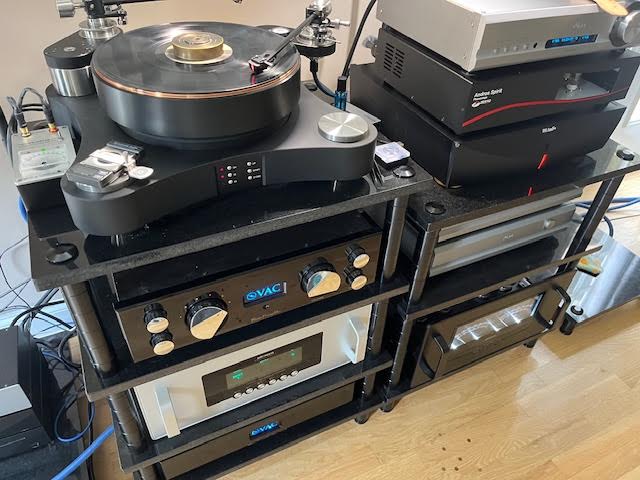
Specifications
DS W3 Optical Cartridge
Signal output Photo-electric Conversion Channel
separation 27dB more(1KHz)
Weight 7.9g
Output signal level 70mV (1kHz cartridge output)
Canti-lever Boron
Body material Aluminum(A5052)
Cantilever holder material Stainless
Needle pressure 1.85g~2.05g (1.95g is recommended)
Stylus Line contact
DS-W3 Equalizer for Optical Cartridge
Output voltage 500mV(1kHz Equalizer output)
Output impedance RCA 120Ω
Pre amp input impedance More than 10kΩ
Input RCA terminal
Output RCA terminal×2, XLR terminal×2
Size W 45cm × H 12cm × D 43.5cm
Weight 13.5kg
Manufacturer Information
DS Audio
North and South America importer:
Musical Surroundings | 5662 Shattuck Ave Oakland, CA 94609 | http://www.musicalsurroundings.com/ info@musicalsurroundings.com |
|---|


